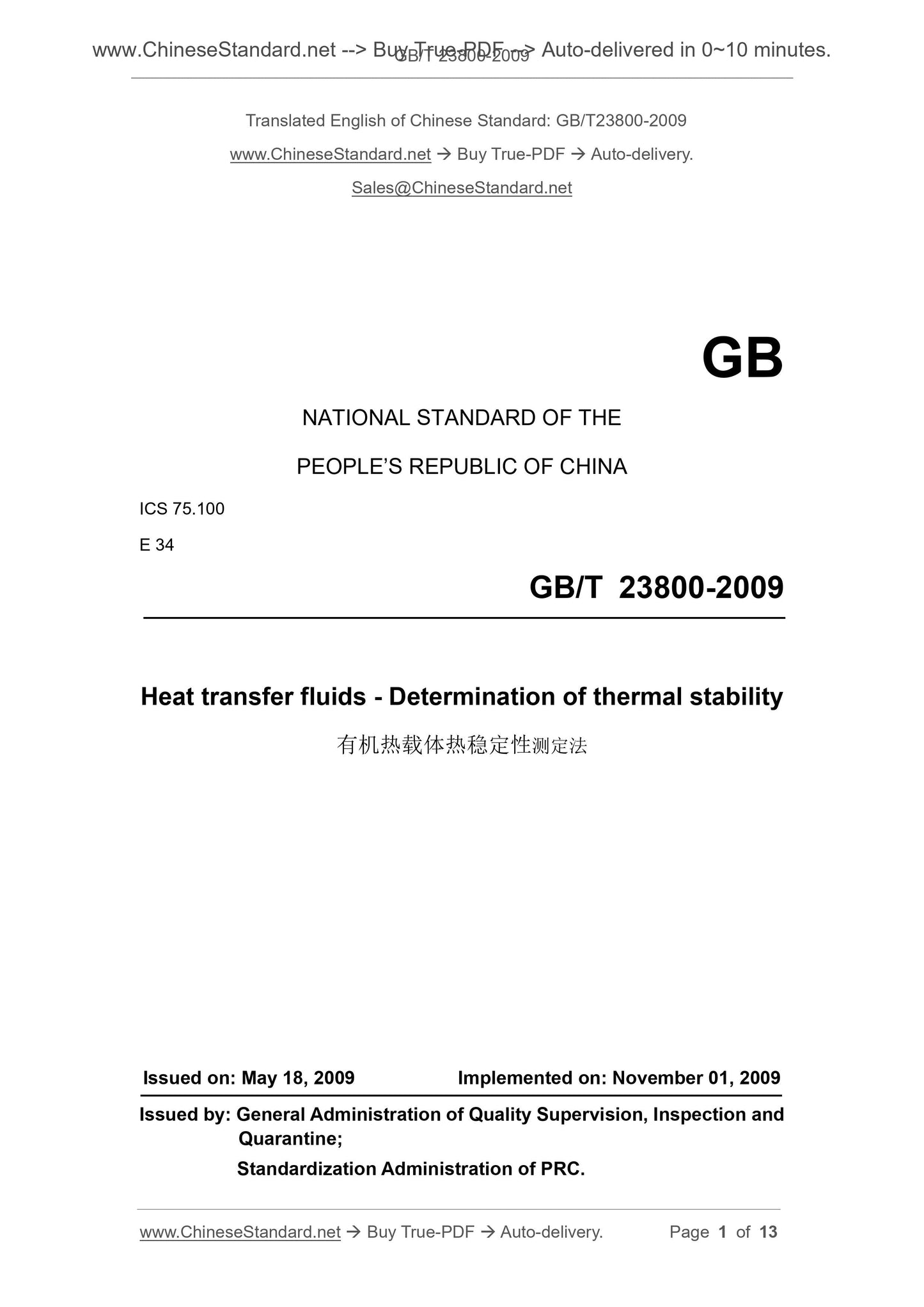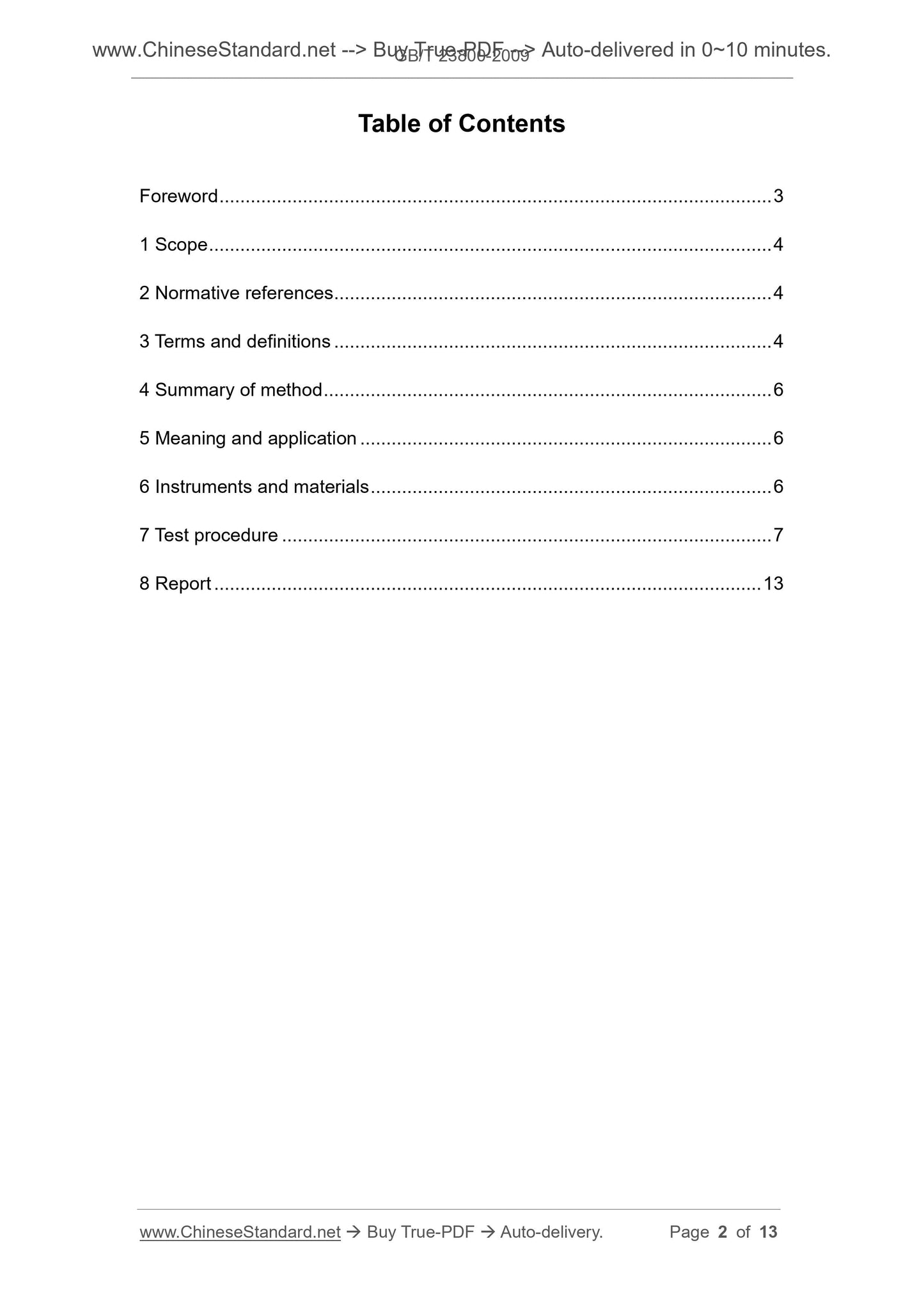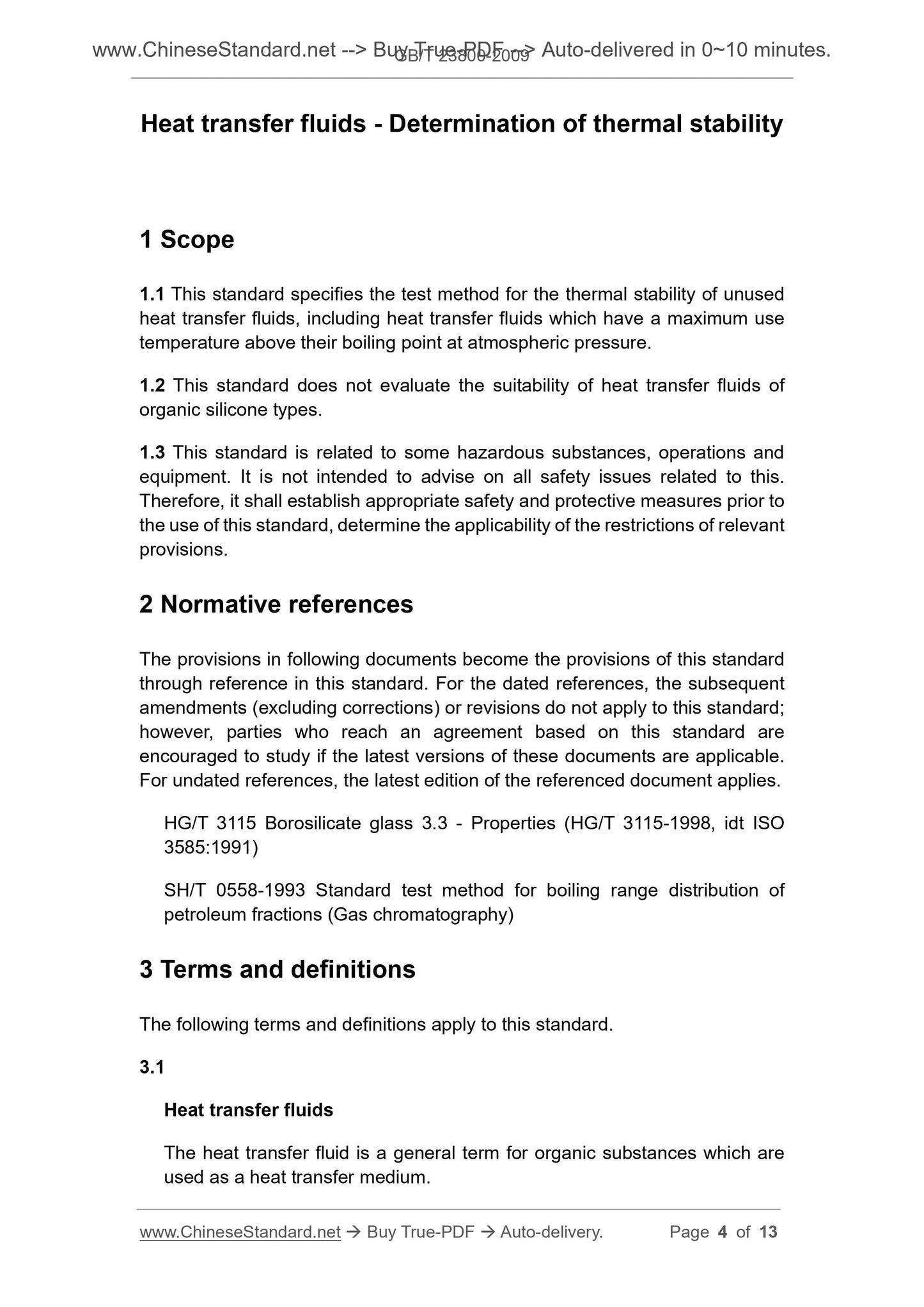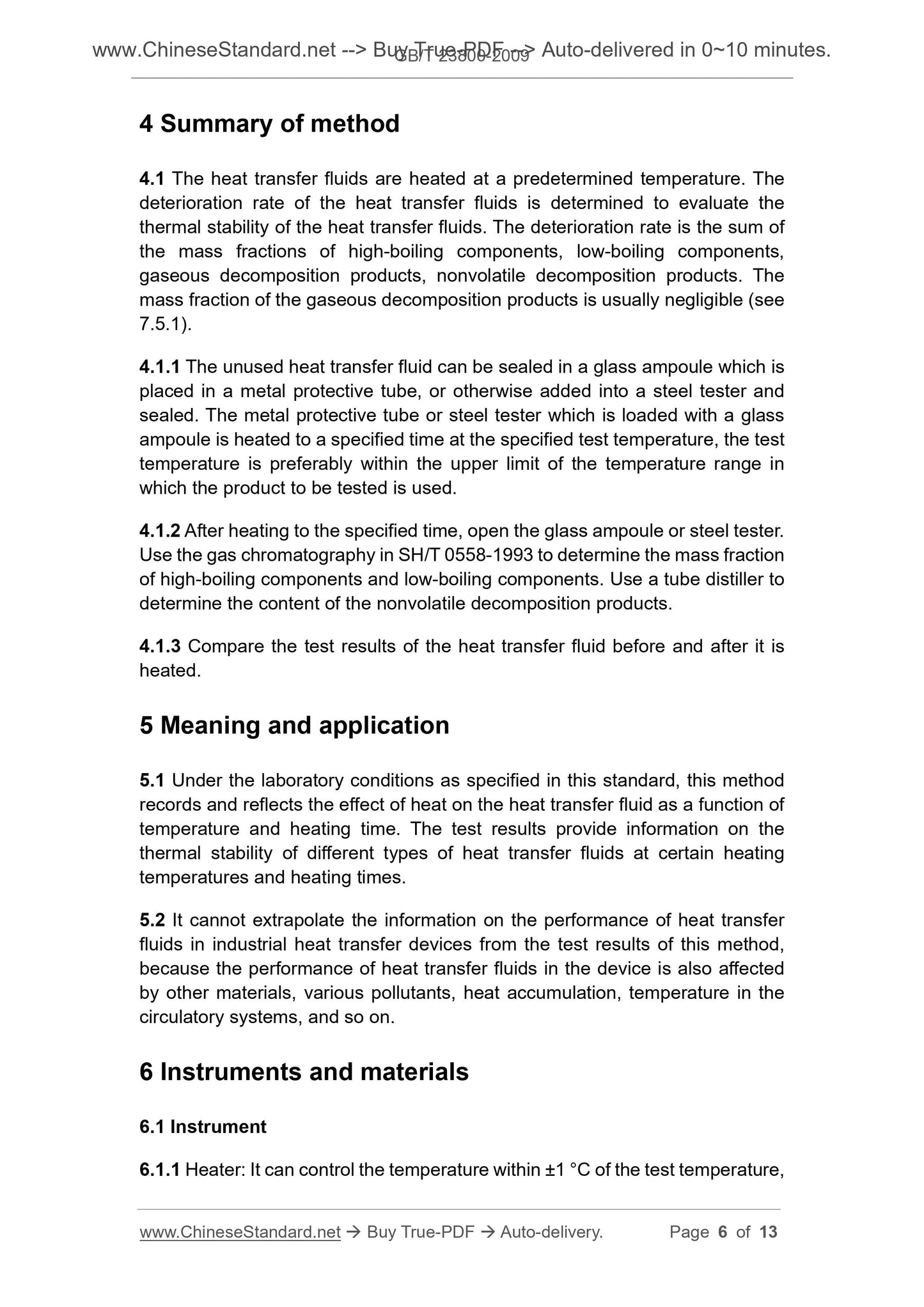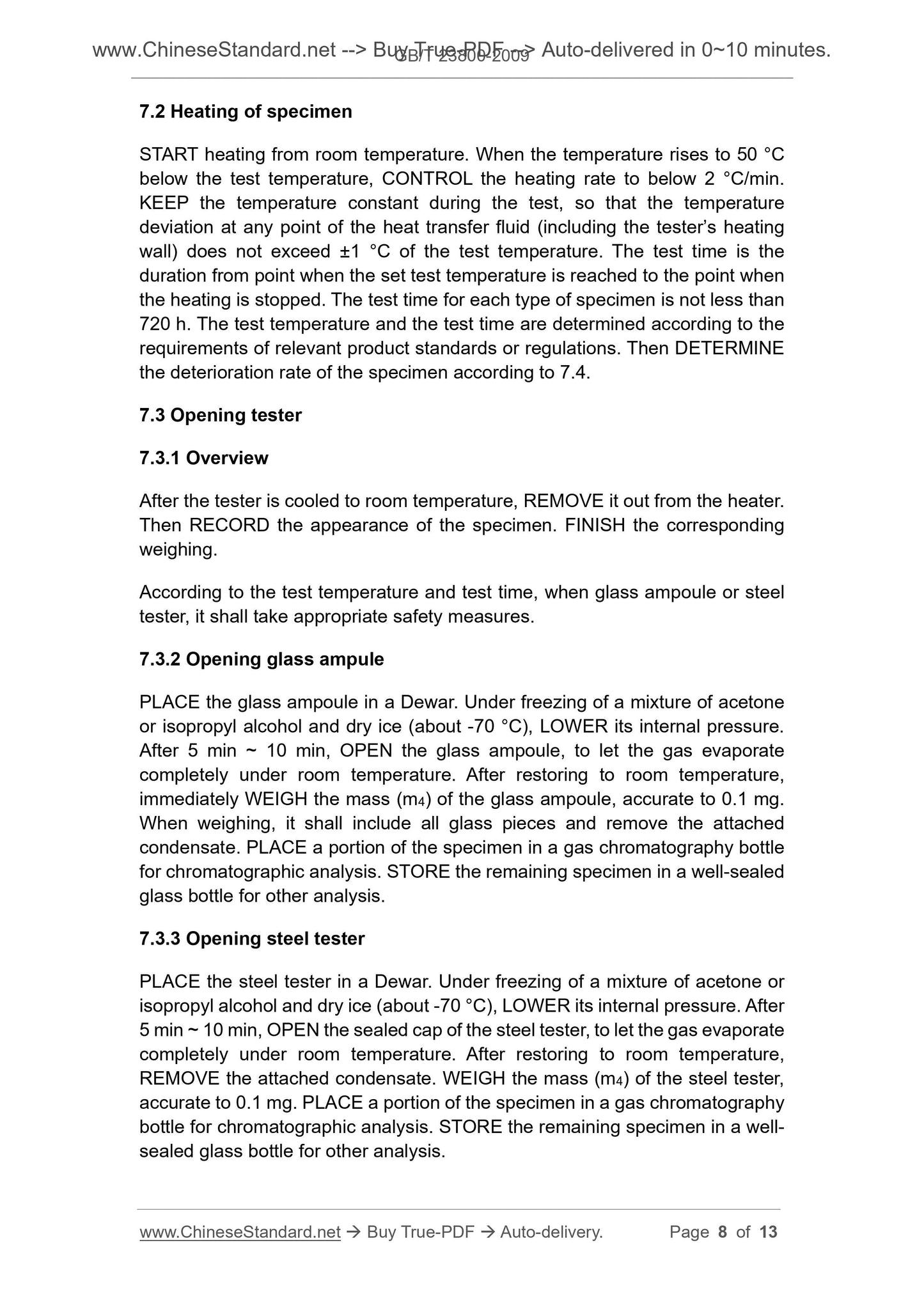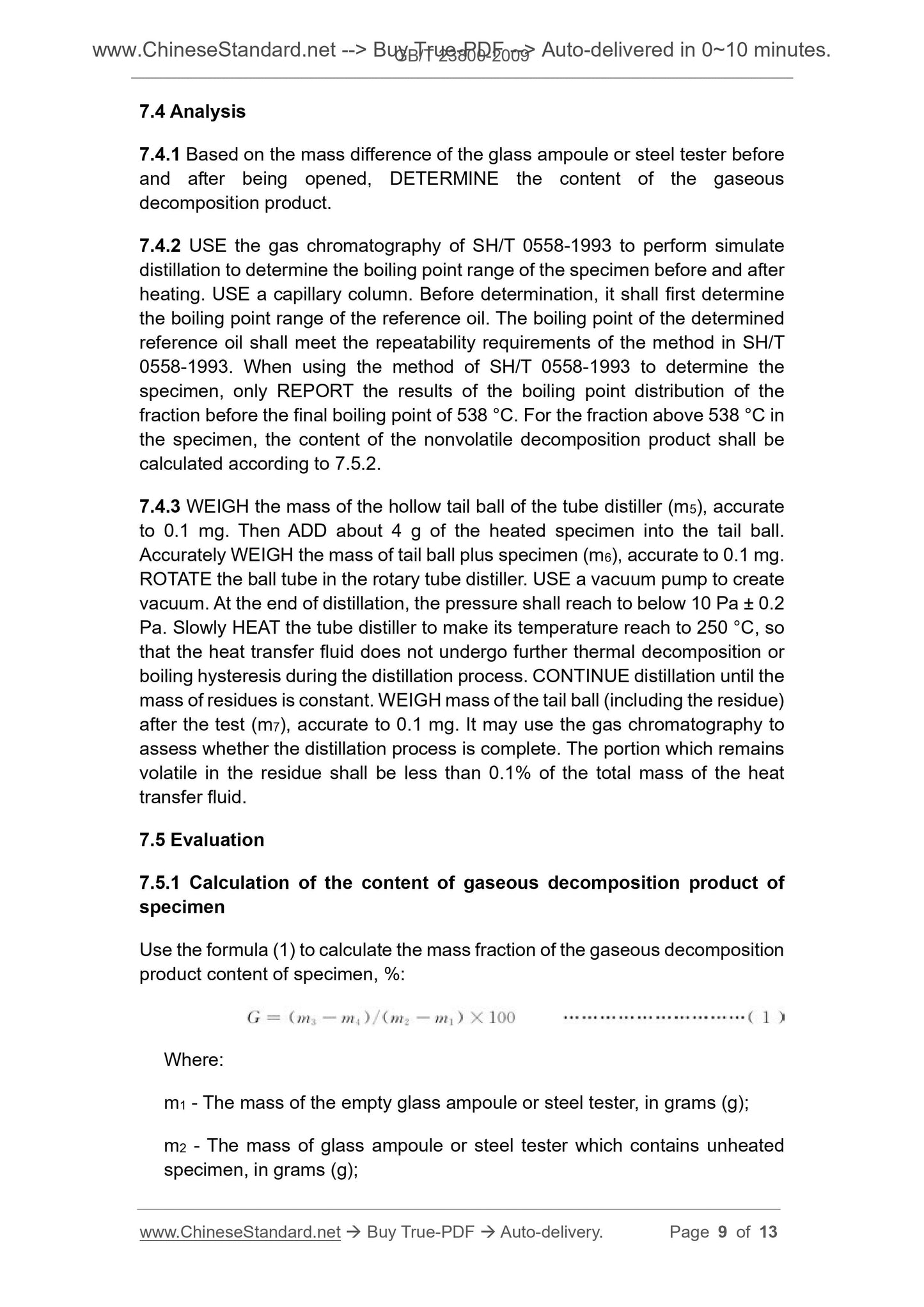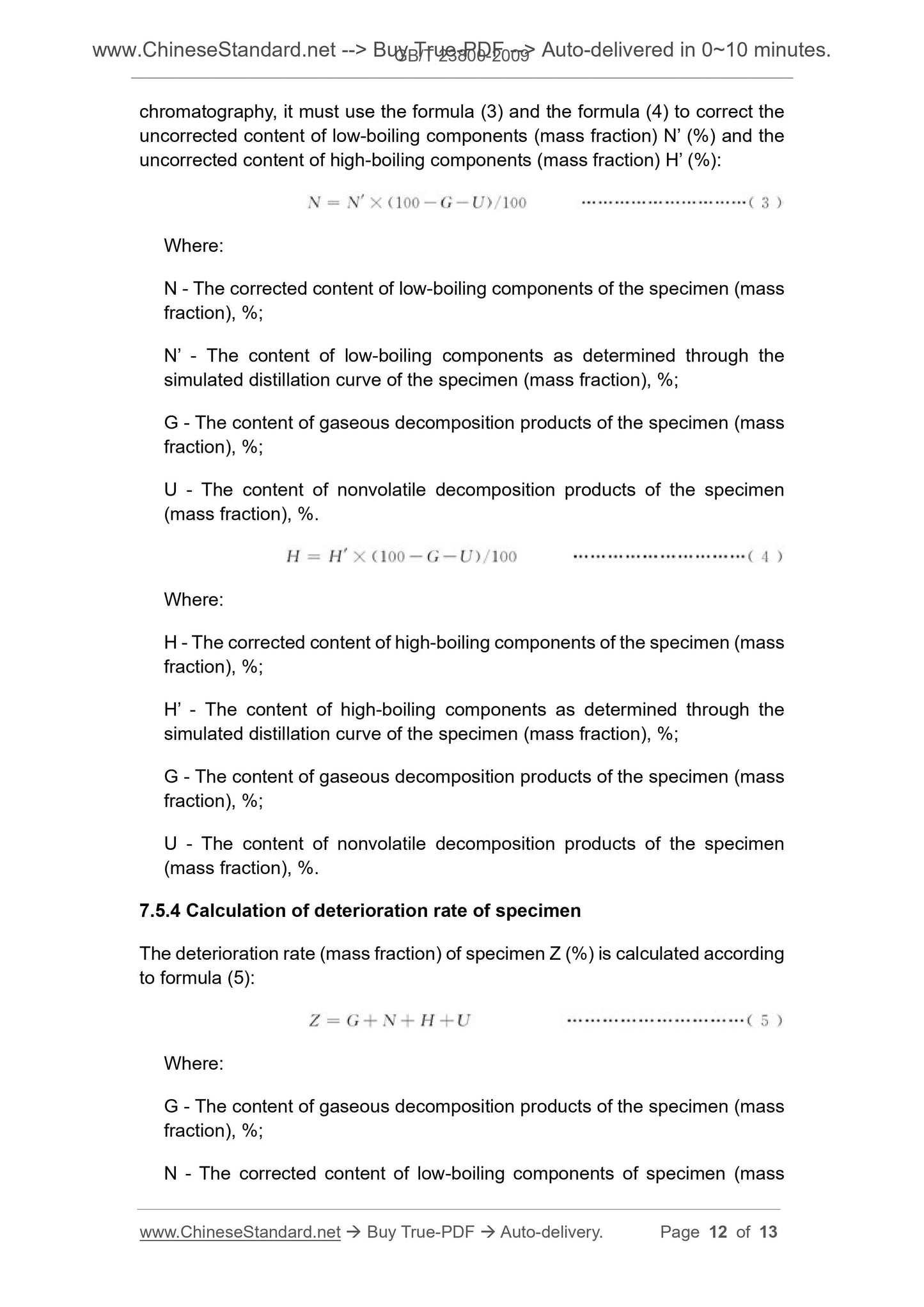1
/
of
7
www.ChineseStandard.us -- Field Test Asia Pte. Ltd.
GB/T 23800-2009 English PDF (GB/T23800-2009)
GB/T 23800-2009 English PDF (GB/T23800-2009)
Regular price
$75.00
Regular price
Sale price
$75.00
Unit price
/
per
Shipping calculated at checkout.
Couldn't load pickup availability
GB/T 23800-2009: Heat transfer fluids -- Determination of thermal stability
Delivery: 9 seconds. Download (and Email) true-PDF + Invoice.Get Quotation: Click GB/T 23800-2009 (Self-service in 1-minute)
Newer / historical versions: GB/T 23800-2009
Preview True-PDF
Scope
1.1 This standard specifies the test method for the thermal stability of unusedheat transfer fluids, including heat transfer fluids which have a maximum use
temperature above their boiling point at atmospheric pressure.
1.2 This standard does not evaluate the suitability of heat transfer fluids of
organic silicone types.
1.3 This standard is related to some hazardous substances, operations and
equipment. It is not intended to advise on all safety issues related to this.
Therefore, it shall establish appropriate safety and protective measures prior to
the use of this standard, determine the applicability of the restrictions of relevant
provisions.
Basic Data
| Standard ID | GB/T 23800-2009 (GB/T23800-2009) |
| Description (Translated English) | Heat transfer fluids -- Determination of thermal stability |
| Sector / Industry | National Standard (Recommended) |
| Classification of Chinese Standard | E34 |
| Classification of International Standard | 75.100 |
| Word Count Estimation | 10,114 |
| Date of Issue | 2009-05-18 |
| Date of Implementation | 2009-11-01 |
| Quoted Standard | HG/T 3115; SH/T 0558-1993 |
| Adopted Standard | DIN 51528-1998, MOD |
| Regulation (derived from) | PRC National Standard Approval Announcement 2009 No.7 (Total No.147) |
| Issuing agency(ies) | General Administration of Quality Supervision, Inspection and Quarantine of the People's Republic of China, Standardization Administration of the People's Republic of China |
| Summary | This standard specifies test methods for unused organic heat thermal stability, including the highest temperature under atmospheric pressure above its boiling point organic heat carrier. This standard is not to evaluate the applicability of silicone heat carrier. This standard relates to certain hazardous substances, operation and equipment, has no intention of all the security issues related to this recommendations. Therefore, before using this standard to establish appropriate safety and health practices and determine the applicability of regulatory limitations related. |
Share
